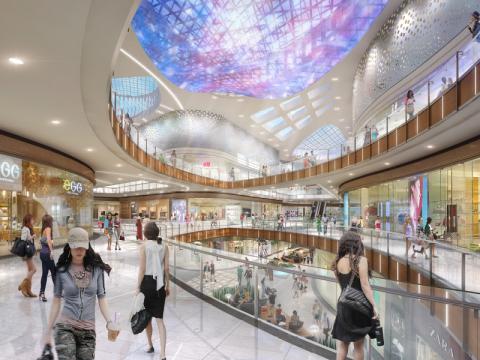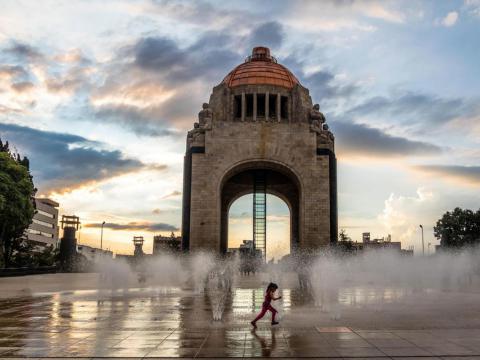Introducing Mexico City
Mexico City, the vibrant and bustling capital of Mexico, is a city that encapsulates the essence of the nation's rich history, diverse culture, and dynamic urban life. From its ancient roots as the heart of the Aztec empire to its modern status as a sprawling metropolis, Mexico City stands as a testament to resilience, creativity, and the interplay between tradition and progress. This essay delves into the multifaceted dimensions of Mexico City, exploring its historical significance, cultural richness, urban challenges, and aspirations for the future.
Historical Significance and Cultural Heritage
Mexico City's history is a tapestry woven from layers of indigenous roots and colonial influences. Originally built on the ruins of the Aztec capital of Tenochtitlan, the city carries the legacy of the Aztec civilization in its very foundations. The Spanish conquest brought forth a fusion of cultures, evident in the architecture, art, and traditions that define the city. Landmarks such as the Templo Mayor and the Metropolitan Cathedral serve as reminders of this complex history.
Cultural Vibrancy and Creative Expression
Mexico City is a hub of cultural vibrancy, where artistic expression flourishes in various forms. The city's museums, including the Frida Kahlo Museum and the National Museum of Anthropology, house priceless treasures that reflect Mexico's diverse heritage. Murals by renowned artists like Diego Rivera adorn public spaces, telling stories of social struggle, resilience, and national identity. Festivals such as Dia de los Muertos showcase the city's deep-rooted traditions and creative ingenuity.
Urban Complexity and Challenges
As a sprawling metropolis with a population exceeding 20 million, Mexico City faces a unique set of urban challenges. Rapid urbanization has led to issues such as traffic congestion, air pollution, and inadequate infrastructure. The quest to balance modernization with the preservation of historical sites requires thoughtful urban planning that addresses the needs of a diverse population.
Environmental Sustainability and Resilience
Mexico City's altitude and geography make it particularly susceptible to environmental challenges. Air pollution and water scarcity are significant concerns that require comprehensive strategies for sustainable development. Initiatives like green spaces, bike lanes, and water conservation efforts reflect the city's commitment to resilience and environmental stewardship.
Culinary Heritage and Gastronomic Delights
Mexico City's culinary scene is a testament to the fusion of flavors that characterize the nation's gastronomy. Street food vendors offer tantalizing delights like tacos, tamales, and churros, inviting residents and visitors to savor the diverse palate of Mexican cuisine. The city's culinary heritage has earned it recognition as a UNESCO Creative City of Gastronomy, celebrating its role as a culinary capital.
Inclusivity and Social Change
Mexico City's ethos of inclusivity is evident in its efforts to address social inequalities and promote social change. Gender equality initiatives, LGBTQ+ rights advocacy, and cultural awareness programs underscore the city's commitment to fostering a more equitable society. Public spaces that cater to diverse communities showcase the importance of embracing all residents' voices and experiences.
Cultural Diplomacy and Global Connections
Mexico City's role extends beyond its borders as a center of cultural diplomacy. The city's cultural exchanges, international events, and artistic collaborations showcase its influence on the global stage. The Mexican capital's rich artistic and cultural offerings have the power to bridge diverse communities and foster mutual understanding.
Prospects for the Future
Mexico City's prospects for the future hinge on its ability to address urban challenges while nurturing its cultural heritage. Sustainable urban development, investment in infrastructure, and green initiatives are pivotal for enhancing the city's quality of life. By preserving historical sites, promoting artistic expression, and fostering social inclusivity, Mexico City can continue to thrive as a symbol of creativity, resilience, and progress.
Conclusion
Mexico City, a vibrant tapestry of history, culture, and urban complexity, is a reflection of Mexico's diverse identity and dynamic spirit. Its transformation from an ancient Aztec capital to a modern metropolis is a testament to its adaptability and the fusion of tradition and progress. As Mexico City embraces the challenges of urbanization, environmental sustainability, and social change, it does so while cherishing its cultural heritage and artistic expression. In the heart of this bustling city, past and present intertwine to create a mosaic that celebrates the resilience, creativity, and unity that define the Mexican spirit.
Last modified on 08/14/2023 - 06:58
Places 0
Currently there are no places in Mexico City.
Articles 0
Currently there are no articles about Mexico City.
Trip reports 2
Videos
Currently there are no videos of Mexico City.





